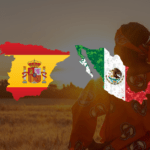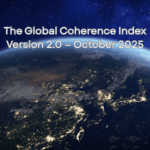Ever wonder about the Vikings, those legendary Norse adventurers of the early medieval period? Well, between 793 and 1066 AD, they were kind of a big deal. This era, known as the Viking Age, wasn’t just about fearsome warriors raiding their way across Europe; it was a pivotal time that reshaped the world’s trade routes and economic landscapes.
Let’s dive into how Viking expeditions were not merely about plunder but played a crucial role in connecting distant lands and cultures, transforming economies across continents.
The Dawn of Viking Exploration
Imagine it’s 793 AD, and you’re living peacefully on the island of Lindisfarne, off England’s northeast coast. Suddenly, these daunting seafarers from Scandinavia show up. Yes, that’s the Vikings for you, kickstarting what we now call the Viking Age with a raid that shook the European world. But what really drove these Norsemen to venture out of their homelands?
It turns out the Vikings had quite a few reasons to explore. Beyond the lust for loot, they were driven by a cocktail of economic needs, social structures, and some pretty ambitious political goals. With their lands offering limited agricultural opportunities, the Vikings were on the lookout for wealth, new territories, and trade routes. Plus, their society valued honor and heroic deeds, which motivated many to seek fortune and fame far from home. So, in essence, Viking exploration was fueled by a mix of necessity and aspiration, setting the stage for their significant impact on global trade and cultural exchange.
Viking Ventures to the West
So, after stirring things up in England, the Vikings set their sights even further. Let’s see where their longships took them next:
- Iceland (Settlement circa 870 AD): Picture the Vikings landing in Iceland, a land of fire and ice, untouched and ripe for settlement. By around 870 AD, they were setting up shop, using it as a launching pad for more adventures. Iceland wasn’t just a new home; it was a strategic spot for Vikings looking to explore further west.
- Greenland (Settlement circa 980 AD): Then came Erik the Red, kind of a rebel even by Viking standards, who found himself in Greenland. Around 980 AD, he convinced others to join him, establishing settlements that would thrive for centuries. Greenland became a key player in the Vikings’ North Atlantic network, connecting them back to Europe with trade routes that were as cold as they were lucrative.
- Vinland/North America (circa 1000 AD): Fast forward to around 1000 AD, and Leif Erikson, possibly driven by the same mix of daring and curiosity as his old man, reached North America. The site known as L’Anse aux Meadows in modern-day Newfoundland, Canada, marks this incredible journey. Before Columbus even had a ship, the Vikings were making pre-Columbian Uber rides across the Atlantic!
Expansion into the European Continent
But wait, there’s more! The Vikings weren’t content with just the North Atlantic; they had their eyes on the rich lands of Europe too.
- The British Isles (From 793 AD Onwards): Starting with the shock-and-awe at Lindisfarne, the Vikings kept coming back to the British Isles for more. They weren’t just raiders; they were settlers who eventually carved out their own kingdom in England called the Danelaw. Talk about leaving a mark!
- France and the Seine River (Siege of Paris, 845 AD): The Vikings knew a good river when they saw one, and the Seine was perfect for both trading and raiding. Their siege of Paris in 845 AD was so epic that it led to the creation of Normandy in 911 AD. That’s right, the French king basically gave them land to chill out. If that’s not negotiation skills, I don’t know what is.
- The Eastern Routes – Russia and the Byzantine Empire: Ever heard of the Varangians? These were the Vikings who decided to venture east, laying the foundations of what would become Russia (the Kievan Rus’, anyone?). They didn’t stop there, though. They pushed on to the Byzantine Empire and even got involved in trade with the Islamic Caliphates. The Vikings were all about making connections, turning the rivers of Eastern Europe into the highways of their time.
The Vikings were way more than just fierce warriors; they were explorers, traders, and settlers who left an indelible mark on history, from the icy shores of North America to the bustling markets of Constantinople.
Impact on Global Trade Networks

Trade Goods and Cultural Sharing
When we think of Vikings, we often picture fearsome warriors. However, these Norse explorers were also savvy traders who dealt in a wide range of goods. Imagine a Viking marketplace bustling with activity, where furs from the North were exchanged for silks from the East. Slaves, silver, and weaponry were also hot commodities, showing the Vikings’ diverse trading interests. But it wasn’t just goods that were exchanged; ideas, technologies, and cultural practices flowed freely along these trade routes. This exchange helped to knit together the medieval world, from the remote villages of Scandinavia to the bazaars of Constantinople, fostering a level of intercultural connection that was ahead of its time.
Technological and Navigational Innovations
Now, let’s talk tech—Viking style. These guys were the Elon Musks of maritime technology, revolutionizing shipbuilding with their sleek, fast, and seaworthy longships. These innovations allowed them to sail further and faster, reaching the shores of distant lands. But it wasn’t just about speed; the Vikings’ navigational skills were unparalleled. They used the sun, the stars, and even the color of the ocean to find their way across the open sea, long before the GPS made its way into our smartphones. This combination of shipbuilding and navigational prowess was key to their success as traders and explorers, opening up new routes that would shape the course of maritime exploration.
Economic Systems Transformation
The Vikings didn’t just travel and trade; they transformed economies. Their trade networks connected remote areas with major trade centers, injecting wealth and goods into local economies and spurring urbanization. Towns grew around Viking trading posts, eventually blossoming into thriving urban centers. Take York in England, for example, which became a bustling hub under Viking influence. These economic changes laid the groundwork for the development of modern market towns and trade centers in Europe. By introducing new goods and stimulating trade, the Vikings played a crucial role in shaping the economic landscape of the medieval world.
In short, the Vikings were much more than raiders; they were agents of change. Through their vast trade networks, technological innovations, and economic impact, they not only enriched themselves but also left a lasting legacy on the world, proving that they were ahead of their time in more ways than one.

Legacy of Viking Exploration
Let’s wrap this up by looking at what the Vikings left behind, aside from their addicting Netflix series:
Genetic Influence
Recent DNA studies are like history books written in our genes, showing us just how far and wide the Vikings traveled. These studies reveal the spread of Norse genetics across Europe and even into North America, proving that Vikings didn’t just visit these places; they made themselves at home. This genetic legacy is a testament to the vast reach of Viking explorations and their interactions with different peoples.
Cultural Legacy
The Vikings were more than just fierce warriors; they were also creators of culture. The regions they explored, traded with, and settled in were forever changed. From the introduction of new words and names into the English language to influencing legal systems, Viking culture has left indelible marks on the societies they touched. Their societal structures, based on laws and collective decision-making, contributed to the development of governance in many parts of Europe.

Modern Perception of Vikings
Today, our view of Vikings is colored by their remarkable achievements in exploration and trade, moving beyond the old stereotypes of barbaric raiders. Thanks to ongoing archaeological discoveries and scholarly research, we now see Vikings as skilled navigators, shrewd merchants, and catalysts of cultural exchange. This richer, more nuanced understanding highlights the complexity of Viking society and their profound impact on history.
Conclusion
From their audacious raids to their sprawling trade networks, Viking expeditions were undeniably instrumental in shaping the medieval world. Their journeys connected distant corners of the globe, fostering economic, cultural, and genetic exchanges that have left a lasting legacy. By recognizing Vikings as the skilled navigators, traders, and influencers they were, we gain a deeper appreciation for their role in the development of global trade routes and their enduring influence on the economic systems and cultures across continents. In retracing the longships’ wake, we uncover the true scope of Viking impact—a saga of exploration, innovation, and connection that continues to captivate us today.
References:
- Trade in the Viking period. (s. f.). National Museum Of Denmark. https://en.natmus.dk/historical-knowledge/denmark/prehistoric-period-until-1050-ad/the-viking-age/expeditions-and-raids/trade-in-the-viking-period/
- Root, & Root. (2023, 23 febrero). Viking Traders: How exactly did they trade? History. https://www.historyonthenet.com/vikings-as-traders
- Map Showing the Sources of Viking Trade Goods • MyLearning. (s. f.). https://www.mylearning.org/resources/map-showing-the-sources-of-viking-trade-goods
- MacAmhlaidh, B., & MacAmhlaidh, B. (2024, 5 marzo). Viking Age Trade Routes in North-West Europe. World History Encyclopedia. https://www.worldhistory.org/image/9284/viking-age-trade-routes-in-north-west-europe/
- Dailyscandi. (2016, 7 noviembre). Vikings’ Trade with Byzantium. Daily Scandinavian. https://www.dailyscandinavian.com/vikings-trade-byzantium/









No responses yet